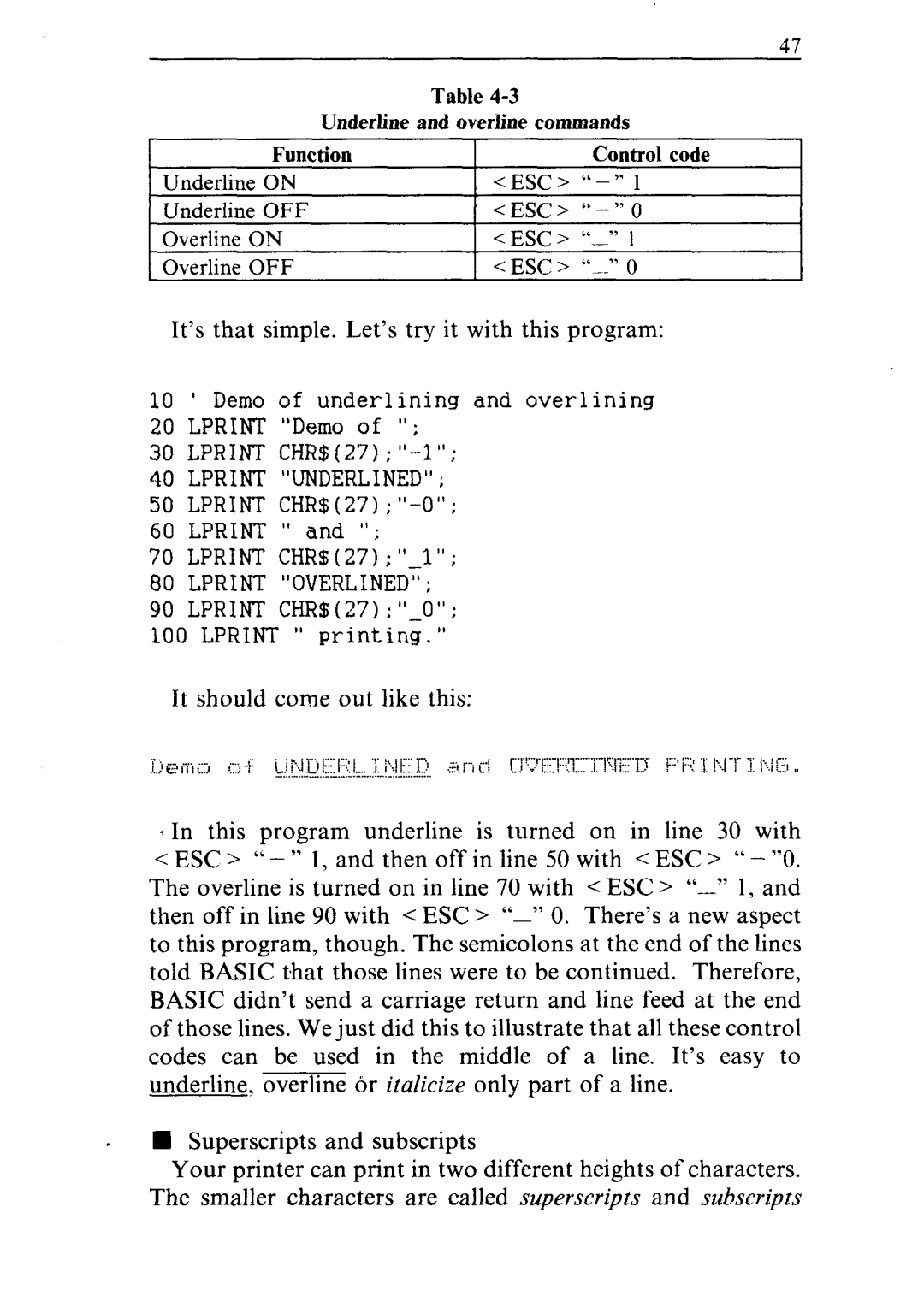
67
Table
Underline and overline commands
It’s that simple. Let’s try it with this program:
10 ’ Demo of underlining and overlinins
20 LPRINT "Demo of I';
30LPRINT
40LPRINT "UNDERLINED";
50LPRINT
60LPRINT " and 'I;
70LPRINT
80LPRTNT "OVERLINED";
90LPRINT
It should come out like this:
qIn this program underline is turned on in line 30 with <ESC> “ - ” 1, and then off in line 50 with < ESC > “ - “0. The overline is turned on in line 70 with < ESC >
nSuperscripts and subscripts
Your printer can print in two different heights of characters. The smaller characters are called superscripts and subscripts
